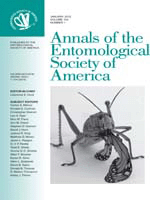-
Views
-
Cite
Cite
Kazuo Kawano, Sexual Dimorphism and the Making of Oversized Male Characters in Beetles (Coleoptera), Annals of the Entomological Society of America, Volume 99, Issue 2, 1 March 2006, Pages 327–341, https://doi.org/10.1603/0013-8746(2006)099[0327:SDATMO]2.0.CO;2
Close - Share Icon Share
Abstract
Sexual dimorphism and the origin of conspicuous male characters in animals have been a major topic of evolutionary biology. Beetles (Coleoptera) possibly represent the greatest number and diversity of sexually dimorphic species. Yet, their features and the origin of oversized male apparatus are not fully understood. Morphological observations of 349 species and subspecies were used to describe the general features of sexual dimorphism and the development of outstanding male characters at the family, genus, species, and subspecies levels. Although allometrically developed male fighting apparatus is the most conspicuously sexually dimorphic, high male intraspecific variability and negatively allometric hind wings may be equally important biological features of sexually dimorphic beetle species. Male traits in sexually dimorphic species primarily evolved through positive allometry for larger apparatus. Their proportion to body size and actual size might have been further enhanced by concerted selection toward higher allometry and larger body, as evidenced by the highly significant interspecific correlation between the two traits seen within some existing genera. Yet, most oversized male traits may have evolved as a result of strong selection toward a larger body that in turn acts on the previously acquired allometry rather than by ongoing selection toward higher allometry. In some other genera, conspicuous male traits may be retained merely as an allometric inertia of selection toward larger body size even after the positive allometry ceased to be adaptively advantageous.





